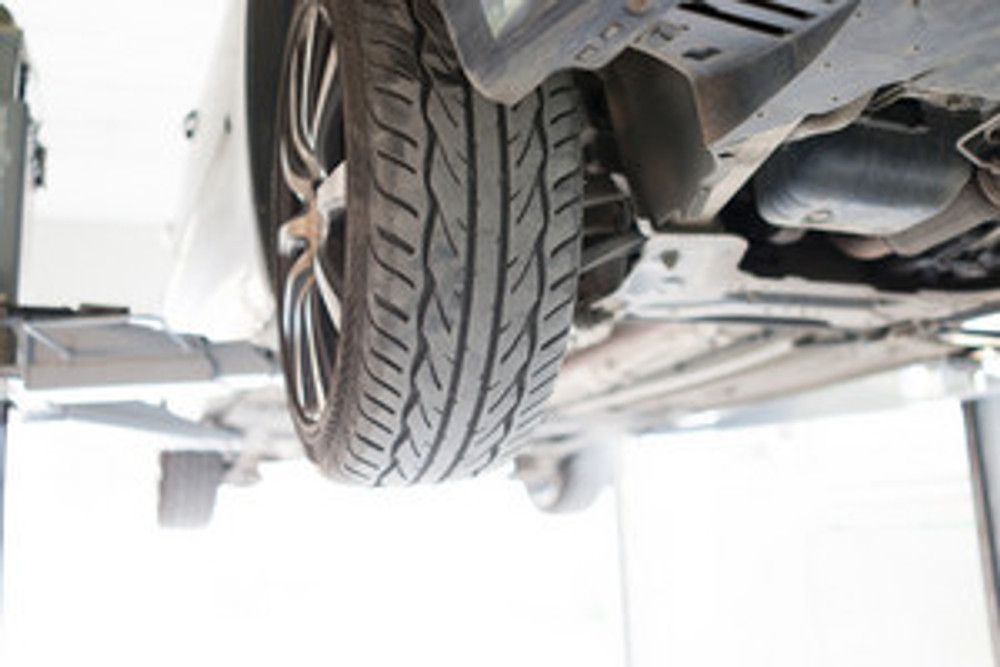Common Tire Balancing Mistakes and How to Avoid Them
15th Aug 2024
Tire balancing is a crucial aspect of vehicle maintenance that often goes overlooked until it becomes a problem. With properly balanced tires, you’ll have a smooth and safe driving experience while preventing premature wear and tear. However, even experienced technicians can make mistakes during the balancing process, leading to issues down the road. Let’s explore some of the most common tire balancing mistakes to avoid, ensuring optimal performance and longevity for your vehicle.
Careless and Improper Weight Placement:
One of the most frequent mistakes made during tire balancing is careless or improper placement of weights. Placing weights haphazardly or in the wrong locations can result in ineffective balancing, leading to vibrations and uneven tire wear. To avoid this mistake, technicians should carefully follow the manufacturer's specifications for weight placement and ensure that weights are securely attached to the wheel.
Mis-mounting the Wheel on the Balancer:
Mis-mounting the wheel on the balancer can also lead to inaccurate balancing results. It's essential to properly mount the wheel onto the balancer according to the manufacturer's instructions, ensuring that it sits securely and evenly. Failure to do so can result in imbalanced readings and potential safety hazards while driving.
Not Centering the Wheel on the Balancer:
Even if you mount the wheel on the balancer correctly, it might not be centered. When the wheel is not properly centered, it can lead to skewed readings and inaccurate weight placement. Technicians should take the time to ensure that the wheel is correctly positioned on the balancer before proceeding with the balancing procedure.
Failure to Validate the Wheel is Centered:
Even if technicians believe they have centered the wheel on the balancer, it's essential to validate this assumption before proceeding with balancing. Using tools or techniques to confirm proper centering can help avoid potential errors and ensure accurate results.
Not Using a Flange Plate on a Clad Wheel:
Clad wheels, which feature a decorative covering over a steel or aluminum base, require special attention during the balancing process. Failing to use a flange plate when balancing a clad wheel can result in damage to the decorative covering or inaccurate balancing results. Technicians should always use a flange plate when working with clad wheels to protect the integrity of the wheel and ensure proper balancing.
Hidden Residual Static Imbalance:
Even after the initial balancing procedure, hidden residual static imbalance can remain, leading to vibrations and instability while driving. Technicians should be aware of this possibility and take steps to correct any residual imbalance to ensure a smooth and comfortable driving experience.
Not Correcting Residual Imbalance:
Simply failing to address residual imbalance can negate the effects of the balancing procedure and lead to ongoing issues with tire wear and performance. Technicians should thoroughly inspect the wheel and tire assembly for any signs of residual imbalance and take appropriate corrective action to resolve the issue.
Failure to Address RFV Eccentricity:
RFV (Radial Force Variation) eccentricity refers to variations in the stiffness of the tire's sidewall, which can affect its balance and performance. Failure to address RFV eccentricity during the balancing process can result in uneven tire wear and handling issues. Technicians should be mindful of RFV eccentricity and take steps to minimize its impact on tire balance and performance.
Random Wheel-to-Vehicle Hub Mounting:
Mounting wheels randomly onto the vehicle hub without considering their specific orientation can also lead to balancing problems. This is one of the biggest tire balancing mistakes to avoid. Technicians should follow the manufacturer's recommendations for wheel mounting to ensure optimal balance and performance.
Not Using Pin Plates:
Pin plates are essential tools for accurately centering wheels on the balancer and preventing slippage during the balancing process. Without pin plates, this can result in inaccurate readings and improper weight placement. Your technicians will get reliable and consistent results with pin plates.
Front Coning Instead of Back Coning:
Finally, incorrectly coning the wheel during the balancing process can also lead to balancing errors. Front coning, where the wheel is cone-mounted from the front, can result in inaccurate readings and improper weight placement. Technicians should use back coning techniques whenever possible to ensure accurate balancing results.
Proper tire balancing is essential for maintaining a smooth and safe driving experience while maximizing the lifespan of your tires. By learning about these tire balancing mistakes to avoid, you know to follow manufacturer recommendations, utilize appropriate tools, and double-check your work. Now you’re prepared to avoid these pitfalls and be a reputable mechanic in the area! Contact JMC Automotive Equipment today for more information.

